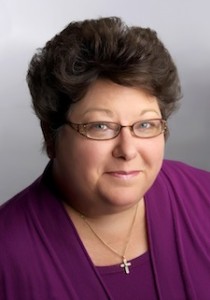Interview with Julie Gill, Past President of the American Society of Radiologic Technologists
Julie Gill, Ph.D., R.T. (R) (QM) is a past president of the American Society of Radiologic Technologists (ASRT) and currently serves on the board of the Association of Educators in Imaging and Radiologic Sciences (AEIRS). Gill has led a successful and service-oriented career, serving in a wide variety of positions at the ASRT such as the following; President-elect, ASRT Board of Directors, Vice President, ASRT Board of Directors, Secretary-Treasurer, ASRT Board of Directors, and Member of the Radiologic Technology Editorial Review Board, among many others.
One of the most significant guidelines that Gill offers in this informative interview is the idea of working in various states as radiology professional. “I think new professionals should be adventurous and pursue employment in another state or region of the country. I have worked in multiple states and have learned something new about my professional practice from each of those experiences.”
Today, Julie Gill is a professor in and the director of the Radiation Science Technology program at the University of Cincinnati, Blue Ash College in Cincinnati, Ohio.
What event or series of events led you to pursue the field of radiology as your professional choice? Please elaborate.
 I enrolled in The Ohio State University knowing that I wanted a major in the health care field, but I wasn’t sure which major that might be. During my sophomore year, I experienced some health issues that required me to have a radiologic exam. From that moment, I was hooked. The technologist was very friendly and seemed to like what he was doing. He encouraged me to look into the career. Luckily, OSU had a bachelor’s degree program in radiologic technology, so I applied and was accepted!
I enrolled in The Ohio State University knowing that I wanted a major in the health care field, but I wasn’t sure which major that might be. During my sophomore year, I experienced some health issues that required me to have a radiologic exam. From that moment, I was hooked. The technologist was very friendly and seemed to like what he was doing. He encouraged me to look into the career. Luckily, OSU had a bachelor’s degree program in radiologic technology, so I applied and was accepted!
Name 1 or 2 guidelines you would offer the radiology professional just entering the field?
I encourage new medical imaging and radiologic science professionals to keep learning. Whether it be earning an advanced degree or learning a new clinical modality, education is always a good thing. It helps you stay current in your professional practice and learn things that you might not learn otherwise. Education also opens doors for new opportunities.
Also, get involved with professional organizations. Joining and being active in the state society provides networking, service, and leadership opportunities for anyone who is interested. It also shows employers that you are serious about your profession and want to make a difference.
How would you advise an individual entering the radiology professions to proceed? What are the challenges, or obstacles that may be faced?
Be patient and work diligently to refine clinical skills. In today’s workforce, new employees might not get their ideal position initially, but if they are persistent and continue to learn, they will find good opportunities. Also, I think new professionals should be adventurous and pursue employment in another state or region of the country. I have worked in multiple states and have learned something new about my professional practice from each of those experiences. Embracing and taking advantage of new opportunities is much easier early in your career when you are not as restricted by location or personal responsibilities.
Can you give us an example of an interesting case or project that you have worked on and your role in helping to achieve a positive outcome.
Because of my involvement with the American Society of Radiologic Technologists, I was fortunate enough to work with a group of dedicated technologists to write a white paper about digital imaging best practices. I learned a great deal from the others in the group. It was very rewarding to offer suggestions to clinical technologists about how to produce an optimal image while following the ALARA (as low as reasonably achievable) principle for patient dose.
As an experienced professional in the radiology profession what role do you feel advanced technology is playing and what other advances do you foresee?
Throughout its history, the radiologic technology profession has been driven by technological developments. Recent innovations have influenced everything, from how we image patient physiology to how we educate students. Technologists are continually learning new software, hardware, and imaging equipment to stay current with the digital age. Fusion imaging is also allowing us the opportunity for collaborative professional education and practice. Staying current with technology is imperative for today’s radiologic technologists.
What is the key strength you bring to your career and how would you advise radiology professionals to mine their own strengths to further their careers.
I am very task-oriented and need to be busy to avoid burnout. I am very fortunate that my current position keeps me very busy (sometimes busier than I would like to be) and that I work with a committed group of radiologic science educators. I think that every employee should do what they enjoy doing the most while at work. Some radiologic technologists excel at patient care, some at supervising others, some at inventorying supplies, and others at committee work. Although all have the same essential job functions and duties, going above and beyond to do what you enjoy the most will make your job not just a job, but a career that you love!
We want to thank Julie Gill for generously sharing her experience and advice with our readers. You can learn more about Julie on the AEIRS website.
